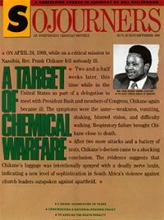I called to make the doctor's appointment, knowing that something was terribly wrong: I was seven months pregnant, but I no longer felt pregnant, despite my considerable size. The heartbeat that Philip and I had heard so clearly and persistently each visit was not audible this time. Inexplicably and without warning, our baby had died.
We were sent to another office for a sonogram, hoping for some answer to that already gnawing question, Why? The sonogram told us only that our baby had a neural tube defect, spina bifida, and a lung anomaly -- none of which explained the death.
Thus began our descent into what the psalmist so aptly termed the "valley of the shadow of death." There were the phone calls that had to be made to parents eager to become grandparents, to sisters waiting to be aunts, and to friends who had shared the joy of anticipating this child's birth. There was also the decision that had to be made about how and when to deliver this child.
Brendan Joseph Albert Turner was delivered on Saturday, September 24, 1988. He weighed 2 pounds, 6 ounces. He was a wounded child: spina bifida, cleft lip and palate, and club feet. Wrapped in a blanket that had been a baby gift, we held him and said hello and goodbye in the same moment. We will never forget that sweet, wounded face that bore no sign of pain; only of peace and gentleness.
We were asked if we wanted him baptized, but, as Calvin has said, God adopts us as his own while we are still in the womb. Brendan was already with our Lord; there was no need to baptize him. But we did think it necessary and appropriate to remember and mark his life, even though that life had been hidden from our sight.
Read the Full Article

